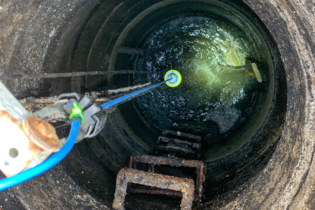
One of SA’s 211 dams, the Clanwilliam Dam.
The national average water storage was at 54.6% this time last year.
According to the department, there has been a slight decrease in capacity in all provinces, with the exception in Limpopo, Mpumalanga and North West where there has been no change.
“The current condition of dams is quite worrying as we are moving out of the period for summer rains,” the department said in a statement. It added that the winter rainfall was also “of great concern” as we have not yet had any significant rain to relieve pressure on the dams in the winter rainfall area.
Over the last week, dam levels fluctuated as follows:
- Eastern Cape was down 0.3% to 62.2%
- Free State dropped 0.1% to 85.6%
- Gauteng’s dam levels were down 0.3% to 92.2%
- KwaZulu-Natal’s levels fell 1.2% to 52.8%
- Limpopo remained steady at 78.6%
- Mpumalanga also remained steady at 79.2%
- Northern Cape levels were down 0.1% to 98.3%
- North West remained steady at 90.5%; and
- Western Cape dam levels dropped 0.8% to 21.4%.
Algoa System
There are five dams serving Nelson Mandela Bay. This week, there was an average decrease of 0.7% to 41.4%.
The department said this system will require special attention as it is significantly lower than last year (80.2%) and has not benefitted from the recent rain. “There is a need to intensify efforts to meet current restrictions to ensure that the system does not fail,” the department said.
Amathole System
There are six dams serving Buffalo City which saw an average decrease of 0.6% to 71.4%.
The department said the dams are significantly lower than last year (89, 3%) and may have to consider restrictions, which will be determined when the systems analysis is done during later in May.
Bloemfontein System
There are four dams serving mainly Mangaung. The department said this system was up by 0.7% to 51.2% as of the end of last week.
“Restrictions are still in place,” the DWS said. “Despite this system being in a better condition than last year (31. 9%) restrictions must be maintained.”
Cape Town Dams System
There are six dams serving the City of Cape Town. This week they decreased by an average of 0.6% to 22.9%%. The system was at 30.6% at the same time last year.
The Voelvlei dam is down 1.0% to 19.7%, the Berg River Dam down 0.3% to 31.9%, and the Theewaterskloof is down by 0.9% to 17.5%.
The department said the restrictions for domestic use will remain at 20% and for agriculture, 30%.
Crocodile West system
There are six dams serving mainly Tshwane, Madibeng and Rustenberg. There was a slight average increase of 0.5% to 99.7%. At this time last year the system was at 95.1%.
The Vaal River System
There are 14 dams serving mainly Gauteng, Sasolburg and Eskom. This system experienced an average decrease of 0.8% to 84.1%.
The Katse Dam is down 0.8 % to 49.1%, the Vaal is down 0.7% to 103.2%, and the Sterkfontein Dam remained steady 89.7%. The Grootdraai Dam is down to 95.1%, while Bloemhof increased by 0.2% to 101.4%.
Umgeni Dam system
There are five dams serving mainly eThekwini and Msunduze. At the end of last week the system was steady at 62.7%. It was at 55% last year.
Hazelmere is down to 104.4%. Albert Falls down 0.4% to 35.7%. Midmar dam an increase of 0.2% to 77.9%.
The department said the restrictions of 15% for domestic, 50% for irrigation and 15% for industry are in place.
Other KZN dams which are on the watch list are Klipfontein which is steady at 67%; Hluhluwe which is down 0.4% at 35.8%, Goedertrouw which down 0.2% to 30%; and Pongolapoort which is down 0.1% to 40.9%.
The department said that coastal rains have not benefitted these dams and that all require a high level of vigilance with regard to implementation of restrictions.
The South African Weather Service has predicted low chances of rain in recent weeks, meaning water levels could decline significantly.









